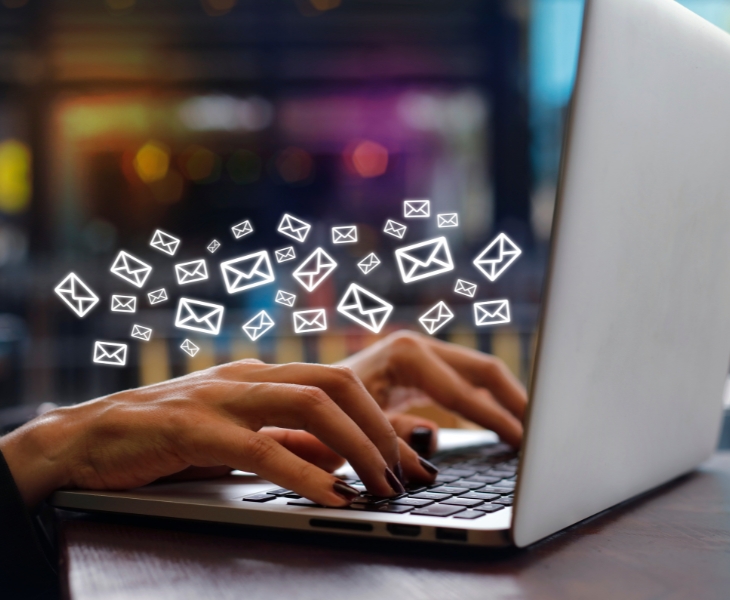As the virtual workforce expands, we are forced to choose email and other digital forms of communication over the face-to-face connections. While it’s certainly convenient and gives us more work flexibility, there is a downside to the increase in emails that comes with working remotely.
According to researchers from the University of California, Irvine, and the United States Army, constantly checking your email diverts your attention away from work and puts you in a “high alert” stress state. Productivity expert Bob Proctor says that email is a disruptor and a distraction that interrupts our workflow by more than 500 percent. To date, email fatigue stands as the leading reason for dissatisfaction with remote work, according to a Superhuman survey, with more than one-third of surveyed employees claiming that they are considering quitting their job due to email stress and constant message overload.
Spending too much time on your inbox can have a negative effect on your mental health as well as your personal life. Here are 7 ways to think outside the inbox and reduce your email stress.
1. Check email at designated times: According to McKinsey research, the average professional spends 28 percent (2.6 hours) of their workday reading and responding to emails. To reduce interruptions and focus on more important tasks, try to check your email at designated times only. One way to do so is by setting up thirty-minute time slots on your calendar. Behavioural studies reveal that people who check their emails only a few times per day are less stressed than those who constantly monitor throughout the day.
2. Use inbox filters: We get cc’d on a lot of emails that are more informational than action based. Set up inbox filters to quickly categorise emails based on priority. As a result, your inbox will only include the most essential and actionable communications and you can quickly scan for anything you might have missed.
3. Delay the delivery: Minimise the transmission of emails received or sent outside of business hours to prevent ‘work-related stress’. Select the “send later” option after drafting the email and then select your customised time and date, to automatically schedule the email. Ultimately, it will cut down the email stress and make a solid impression on your colleagues and clients.
4. Clear out your inbox clutter: An overflowing inbox wastes 27 minutes of your precious time per day, according to a Harvard Business Review article. If you don’t have a plan in place, the backlog will continue to increase, and you’ll find yourself re-reading emails repeatedly. To clear the clog, set aside some time to categorise your emails by creating folders and labels (like projects, receipts, or business trips). You can always add and change folders as you figure out what works best for you.
5. Set expectations on response times: According to MailTime.com, 52 percent of people expect a response to a work-related email within 12 to 24 hours, while only 3 percent are willing to wait for a week. Setting a response time helps to take off the pressure from monitoring your inbox 24×7. Another option is to add a brief under your email signature. Write an explanation of how long it usually takes you to respond and what your office hours are. This will act as a constant reminder to everyone that you’re being conscious about your email time.
6. Lead by example: After-hours email expectations are associated with greater mental stress and hampered work-life balance. Limit your email to work hours, as responding after that shows that you have no set boundaries and are always accessible.
7. Choose the appropriate communication channel: Not every communication needs to take place over email. Some forms of communication, such as instant messaging and face-to-face meetings, are better suited to different channels. Choosing the appropriate channel reduces email clutter and ensures communication is delivered the right way. This will help you to become more aligned and less overwhelmed, and lead to a happier, more productive work environment.
Developing a healthy digital culture is critical for managers and their teams. Consider banning email exchange during specific hours of the day or having “email-free days” to reduce email stress and to keep yourself happy and productive.

